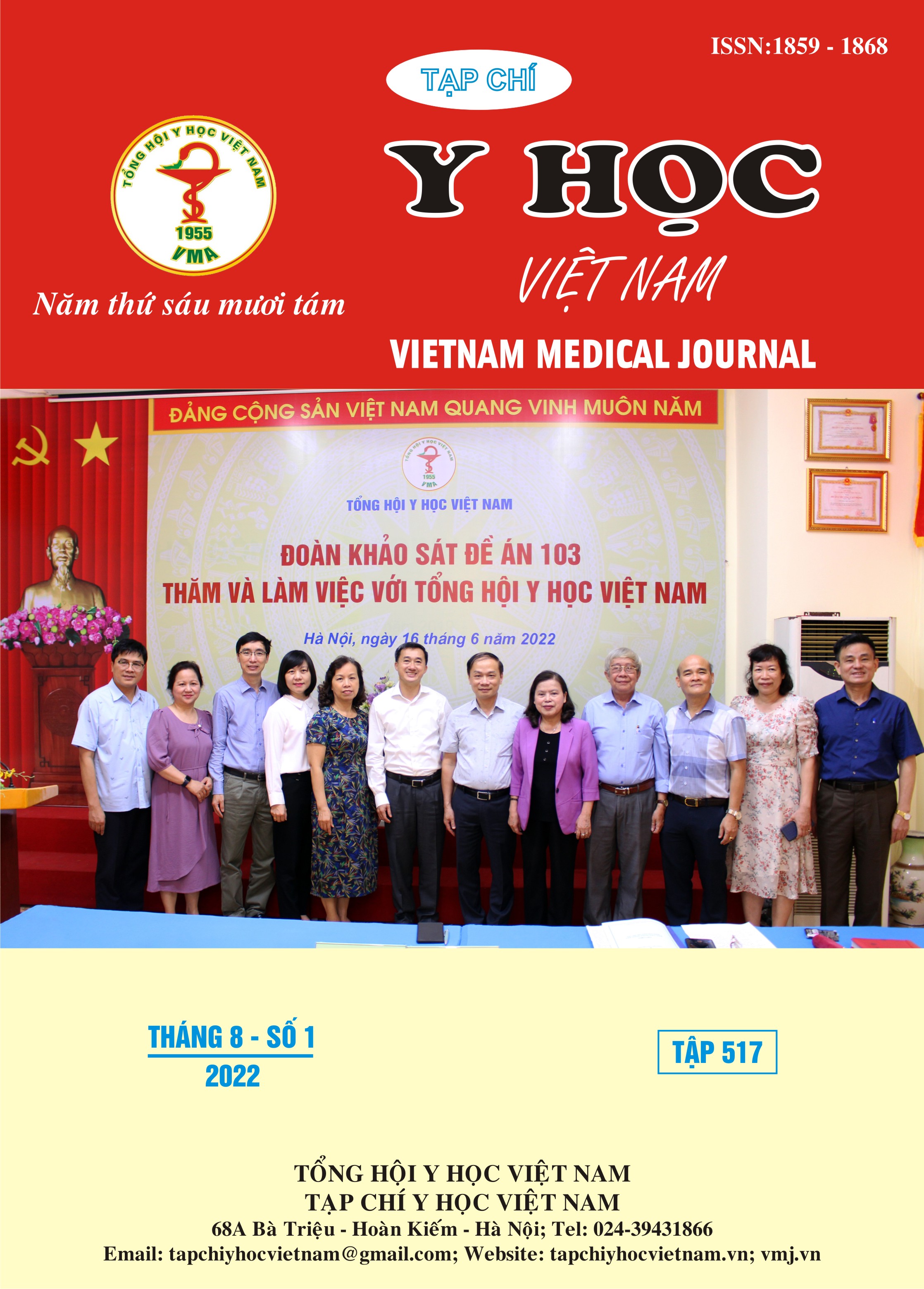CHARACTERISTICS OF POSTERIOR CRANIAL FOSSA MAGNETIC RESONANCE IMAGING OF CHIARI MALFORMATION TYPE I IN ADULTS
Main Article Content
Abstract
Objectives: To investigate some features of posterior cranial fossa magnetic resonance imaging of Chiari malformation type I in adults. Subjects and methods: A retrospective and prospective, descriptive, cross-sectional study on 45 adult patients (≥18 years of age) diagnosed of Chiari I malformation and surgically treated at the Departments of Neurosurgery of Cho Ray Hospital from January 2016 to December 2019. Results: The size of the posterior cranial fossa was narrowed, having a funnel shape, through the indicators of the length of the slide and the height of the occipital bone being shortened and the base angle of the Boogard skull widened. The average degree of herniation of the cerebellar amygdala was 13.2 mm; 26.67% hernia over 10mm. 25 patients (55.56%) had accompanying myelosuppression. Seven patients (15.56%) had kyphosis scoliosis. Three patients (6.67%) had ventricular dilatation. There was some size difference in the posterior fossa between the group with and without Chiari I malformation. Conclusion: Magnetic resonance characteristics of type I chiari malformation with reduced size of posterior fossa, funnel-shaped, through the shortened occipital length and occipital height indices and widened Boogard skull base angle. Some sizes in the posterior fossa were different between the groups with and without Chiari I malformation.
Article Details
Keywords
magnetic resonance, chiari type I
References
2. John A Dufton, Syed Yaser Habeeb, Manraj KS Heran, et al. (2011). Posterior fossa measurements in patients with and without Chiari I malformation. Canadian journal of neurological sciences, 38(3): 452-455.
3. Gregory W Albert, Arnold H Menezes, Daniel R Hansen, et al. (2010). Chiari malformation Type I in children younger than age 6 years: presentation and surgical outcome. Journal of Neurosurgery: Pediatrics, 5(6): 554-561.
4. Sadao Arai, Yoshinori Ohtsuka, Hideshige Moriya, et al. (1993). Scoliosis associated with syringomyelia. Spine, 18(12): 1591-1592.
5. Xiaofeng Deng, Liang Wu, Chenlong Yang, et al. (2013). Surgical treatment of Chiari I malformation with ventricular dilation. Neurologia medico-chirurgica, 53(12): 847-852.
6. Remy Noudel, Nicolas Jovenin, Cristophe Eap, et al. (2009). Incidence of basioccipital hypoplasia in Chiari malformation type I: comparative morphometric study of the posterior cranial fossa. Journal of neurosurgery, 111(5): 1046-1052.
7. Sabri Aydin, Hakan Hanimoglu, Taner Tanriverdi, et al. (2005). Chiari type I malformations in adults: a morphometric analysis of the posterior cranial fossa. Surgical neurology, 64(3): 237-241.
8. Raymond F Sekula, Peter J Jannetta, Kenneth F Casey, et al. (2005). Dimensions of the posterior fossa in patients symptomatic for Chiari I malformation but without cerebellar tonsillar descent. Cerebrospinal fluid research, 2(1): 1-7.


